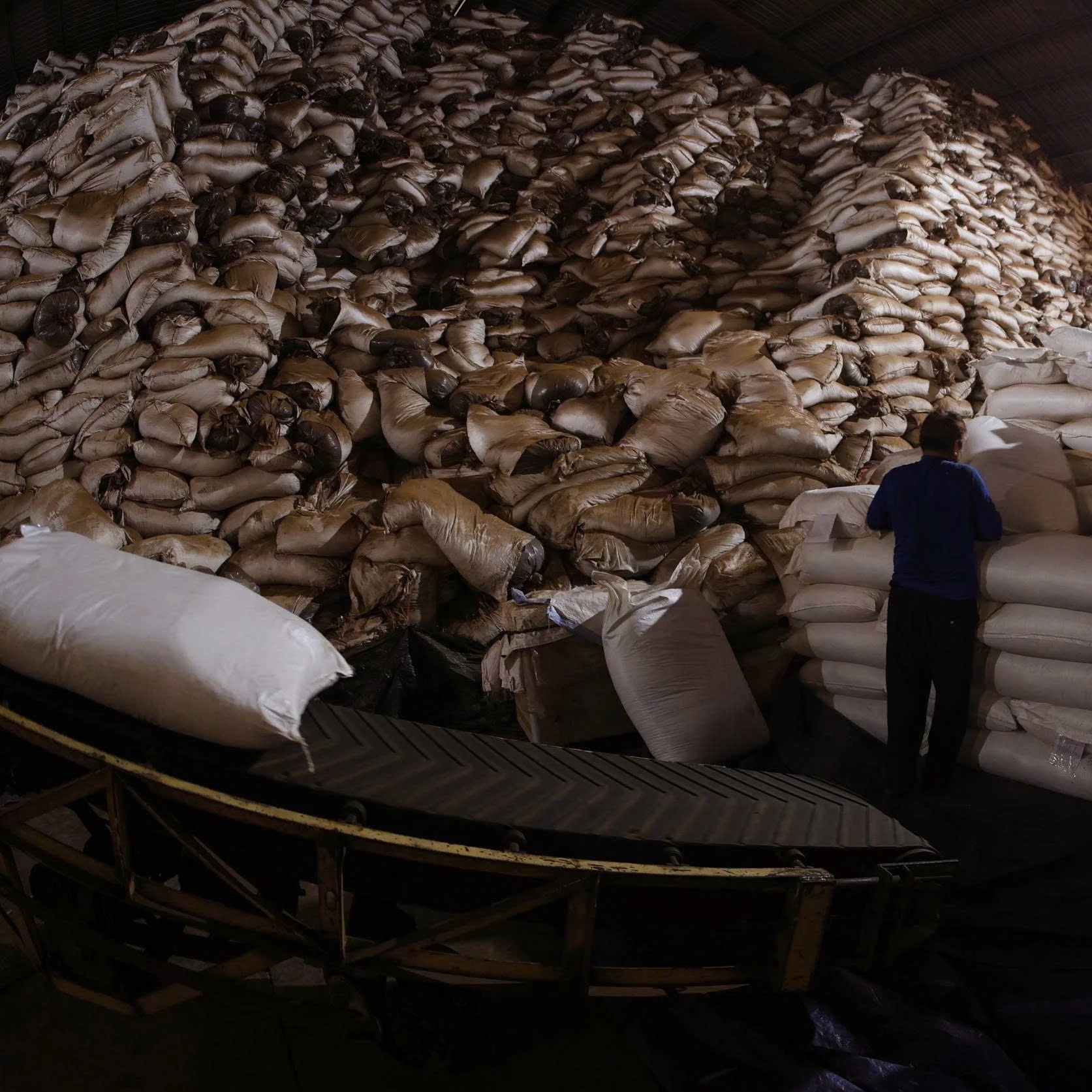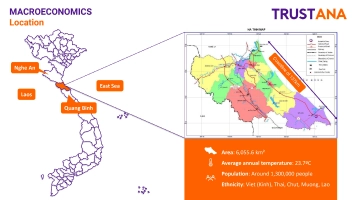Pet Relocation from Vietnam to Cambodia
Posted on: July 23, 2025🌍 Making Pet Relocation Stress-Free with Trustana
Relocating your pet isn’t simply about booking a flight - it’s a deeply personal process of ensuring a beloved family member is safe, comfortable, and cared for at every step of the journey. At Trustana, we specialize in international pet relocation by air, helping Vietnam-based pet owners bring their furry friends to new homes abroad.
At the end of last June, Trustana successfully transported a Japanese Spitz puppy from Hanoi to Phnom Penh for its owner’s relocation and delivered it to the owner just one day after departure.
Whether you're moving for work, education, or a new chapter in life, your pet deserves a journey that’s just as smooth as yours. Through the following article, Trustana will help you answer 5 questions to make transporting pets internationally through Vietnam as easy as possible. And when you're ready, we’re here to help make it all happen - step by step, tail wag by tail wag.
___________________________________________________________________________
✈️ First Things First: Where Are You Going?
The most important step before preparing crates, vaccines, or flights is researching your destination country. Every country has its own entry rules for pets:
- Vaccination requirements and validity windows
- Quarantine rules (some require 7–30 days; others don’t at all)
- Breed bans or restrictions (e.g., snub-nosed breeds are often restricted)
- Minimum age requirements for entry
- Whether the Rabies Titer Test (RNATT) is required (e.g., EU, Japan, Korea)
For example:
- France accepts pets from Vietnam under strict rabies titer testing.
- Singapore classifies Vietnam as a Category D country, requiring 30 days of quarantine.
- The US has recently updated rabies regulations with pre-approval and CDC import permits for Vietnam-origin dogs.
🐾 At Trustana, we keep track of all these regulations, so you don’t have to worry.
___________________________________________________________________________
🐶 Secondly: What Kind of Pet Do You Have?
Each pet is different—and so is their travel plan. Airlines and authorities may treat dogs and cats differently. Even within dogs, snub-nosed breeds (like Bulldogs, Pugs, Shih Tzus) are high-risk flyers, and many airlines impose seasonal or complete bans on transporting them.
Some key factors we always evaluate:
- Species: Dog or cat?
- Breed: Any breed-specific restrictions?
- Age: Most countries won’t accept pets under 3–4 months
- Health status and temperament
- Vaccination history
This isn’t just about logistics—it’s about animal welfare, which we take seriously.
___________________________________________________________________________
🧳 Thirdly: What Are Your Travel Methods Options?
There are 3 main travel categories for pets by air:
🔍 Choose the travel method that best fits your needs and your pet’s profile. However, note that some countries — such as the United Kingdom — only accept pets arriving via Air Cargo, regardless of their size or breed.
________________________________________________________________________
🧬Fourth: Has your pet had health preparations: vaccinations & veterinary procedures?
As mentioned earlier in this guide, requirements vary depending on the destination country and the type of pet (dog or cat). However, most international pet relocations follow a standard set of core health procedures, which are both technical and time-sensitive. One misstep can delay your entire journey, so it's important to understand the basics:
1. Microchipping: Your Pet’s Official ID
The first step is to implant an ISO-compliant microchip under your pet’s skin — this acts as their official ID for international travel. The microchip must meet the ISO 11784/11785 standard (a 15-digit numeric code) and can be scanned by veterinary authorities and customs officials.
Crucially, the microchip must be implanted before any rabies vaccination. If the rabies shot is given first, it won’t be valid for relocation purposes, and your pet will have to be vaccinated again. That’s why this step always comes first in the health prep timeline.
2. Rabies Vaccination: The Most Common Requirement
After microchipping, your pet needs a valid rabies vaccine, administered by a licensed veterinarian. To be valid, the rabies vaccine must be administered no less than 30 days and no more than 12 months before departure, depending on the regulations of your destination country.
Without a valid rabies vaccination, your pet simply cannot fly to most international destinations.
3. Core Vaccines: For Dogs and Cats
In addition to rabies, your pet should receive their core vaccines to ensure basic immunity and meet entry requirements.
- For dogs, this typically includes the DHPPiL vaccine — protecting against Distemper, Hepatitis, Parvovirus, Parainfluenza, and Leptospirosis.
- For cats, the standard is the FVRCP vaccine — covering Feline Viral Rhinotracheitis, Calicivirus, and Panleukopenia.
As with rabies, core vaccines should be given at least 30 days and no more than 12 months before travel, unless otherwise required by your destination.
4. Rabies Titer Test (RNATT): For Strict-Entry Countries
If you’re relocating your pet to countries such as EU, Singapore, Japan, South Korea, or Australia, a Rabies Titer Test (also known as RNATT) will be required. This test measures the level of rabies antibodies in your pet’s blood to confirm that they have developed sufficient immunity after vaccination.
- The test can only be done at least 30 days after the rabies shot. Your vet will take a blood sample, which is then sent to an approved overseas laboratory (such as in the EU or Australia) for analysis.
- Test results typically take 3–4 weeks, and some countries require an additional waiting period of up to 3–6 months after the blood was drawn before your pet can enter.
️🐾 At Trustana, we track every deadline for you — from microchip dates to blood sample submissions — and ensure that all veterinary procedures are performed in accordance with both Vietnamese and international regulations. We coordinate closely with licensed vets and government agencies so that your pet’s health documents are always valid, complete, and ready for smooth international clearance.
___________________________________________________________________________
📌 Last but not least: Have you prepared a crate and trained your pet?
Crate preparation may seem simple at first, but it’s one of the most critical parts of a successful pet relocation. Airlines enforce strict requirements based on IATA Live Animal Regulations (LAR), and the crate plays a huge role in ensuring both the safety of your pet and the airline’s handling crew.
To meet airline standards, your travel crate must:
- Have secure metal doors and screws — plastic latches or clips are not allowed
- Be spacious enough for your pet to stand, turn around, and lie down comfortably
- Food and water dishes must be securely attached inside the crate and accessible from the outside without opening the door.
Each airline may have additional restrictions, but these are the basic international standards.
Even with the right crate, your pet still needs time to adjust to it. Crate training is essential to minimize stress and help your pet feel secure during the flight. In fact, no airline will accept a pet that shows signs of distress or discomfort in its crate.
We recommend starting crate training at least 1–2 weeks before departure. Begin by feeding your pet inside the crate and encouraging them to nap in it daily. This helps associate the crate with positive experiences.
_________________________________________________________________________
💬 Final Thoughts
- Pet relocation is complex—but it doesn’t have to be scary.
- By preparing early, understanding the rules, and working with experienced partners like Trustana, you’re giving your pet the best chance at a safe, comfortable journey.
📞 Contact us today to get started. Whether you want full-service support or just need help with the paperwork, we’re here to guide you every step of the way.
🐾 Your pet’s journey starts with love.
💼 And Trustana handles the rest.
🐾 Why Choose Trustana?
- Based in Vietnam, partnered globally
- Experts in AVI cargo handling & customs regulations
- Strong partnerships with animal-friendly airlines
- Transparent, step-by-step communication
- Most importantly: We love animals
 +84 966 814 138
+84 966 814 138 ceo@trustana.vn
ceo@trustana.vn
.webp)

